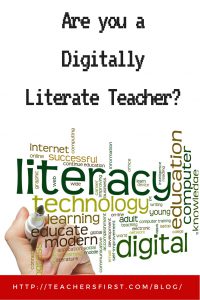 One of my favorite quotes is from futurist guru Alvin Toffler. In Future Shock, incredibly first published in 1970, Toffler is often credited with saying, “The illiterate of the 21st century will not be those who cannot read and write, but those who cannot learn, unlearn and relearn.” It first originated with Herbert Gerjuoy, whom Toffler cited, “The new education must teach the individual how to classify and reclassify information, how to evaluate its veracity, how to change categories when necessary, how to move from the concrete to the abstract and back, how to look at problems from a new direction — how to teach himself.” (https://en.wikipedia.org/wiki/Alvin_Toffler)
One of my favorite quotes is from futurist guru Alvin Toffler. In Future Shock, incredibly first published in 1970, Toffler is often credited with saying, “The illiterate of the 21st century will not be those who cannot read and write, but those who cannot learn, unlearn and relearn.” It first originated with Herbert Gerjuoy, whom Toffler cited, “The new education must teach the individual how to classify and reclassify information, how to evaluate its veracity, how to change categories when necessary, how to move from the concrete to the abstract and back, how to look at problems from a new direction — how to teach himself.” (https://en.wikipedia.org/wiki/Alvin_Toffler)
Even before the digital revolution, I have been continually aware of the importance of finding and using information in my career as a school librarian/media specialist. In our world of change at warp speed, it is more critical than ever that people navigate unlimited information, be able to find and use what is appropriate, and create new meaning from it.
Education is not just about content, but rather what do kids do with the content, how they understand it, make it their own, and create something new, meaningful and useful. This is what the educational movements of the early part of this century are centered around, including the Common Core State Standards and the four Cs of the Framework for 21st Century Learning (critical thinking, communication, collaboration, and creativity).
The particular skills that teachers and students need in today’s technology and media-rich environment are called digital literacy. The American Library Association’s Office for Information Technology Policy has a succinct definition that encompasses all aspects of digital literacy. “Digital Literacy is the ability to use information and communication technologies to find, evaluate, create, and communicate information, requiring both cognitive and technical skills.” In particular, a Digitally Literate Person:
- Possesses the variety of skills – technical and cognitive – required to find, understand, evaluate, create, and communicate digital information in a wide range of formats;
- Is able to use diverse technologies appropriately and effectively to retrieve information, interpret results, and judge the quality of that information;
- Understands the relationship between technology, life-long learning, personal privacy, and stewardship of information;
- Uses these skills and the appropriate technology to communicate and collaborate with peers, colleagues, family, and on occasion, the general public; and
- Uses these skills to actively participate in civic society and contribute to a vibrant, informed, and engaged community.
We already may be digitally literate as teachers. It is equally important to know how we help our students become digitally literate and why we should. Let’s explore some helpful sites and use them to measure our levels of digital literacy.
The International Society for Technology in Education or ISTE (reviewed here), has teacher standards or the NETS-T that help us understand what teachers must know and do. These go hand-in-hand with the NETS-S, or student standards as evidenced by the linking of the two in phrases such as “Effective teachers model and apply the National Educational Technology Standards for Students (NETS•S) as they design, implement, and assess learning experiences to engage students and improve learning; enrich professional practice; and provide positive models for students, colleagues, and the community.”
More information about this critical topic is posted at the University of Southern California Rossier School of Education. Start with the Toolkit for Digitally Literate Teacher, it offers very practical ideas including:
- Checklist: Skills and Tools for Digitally-Literate Teachers–https://rossieronline.usc.edu/blog/digital-literacy-checklist
- 14 Resources to Bookmark for Digital Literacy–https://rossieronline.usc.edu/blog/digital-literacy-resources/
A few additional sites with a wealth of information include U. S. Digital Literacy, (reviewed here), including, Digital Toolkits, 21st Century Skills, and Strategies for Instruction. Common Sense Media’s site (reviewed here) has teaching resources and curricular content for digital literacy. It sponsors a community called the Digital Classroom at Edweb.net. You can learn more by watching their live or archived webinars. Kathy Schrock, a digital education leader and mentor to many, expands on Digital Literacy on her webpage Literacies for the Digital Age. Of course, don’t forget that staple of every teacher’s personal learning network, Twitter (reviewed here). Follow the hashtag #DigitalLiteracy to keep up with what teachers around the world are sharing and discussing.
After reading and digesting so many ideas on digital literacy, get inspired by a TEDx (reviewed here) talk. TEDx Warwick: The Essential Elements of Digital Literacies by Doug Belshaw. TedX He expands the 4Cs to include cultural, cognitive, constructive, confident, and civic skills.
If you follow the Source For Learning’s K12 professional learning team on twitter or partake in OK2Ask professional development, no doubt you are well on your way to being a digitally literate teacher. Watch for future posts that will be discussing more about how teachers teach about and cultivate digital literacy in their students and how digital citizenship for students is an important aspect of digital literacy.

